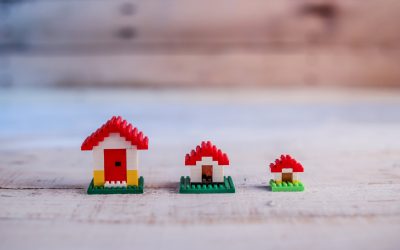*French resources included for FI Grades 6-8*
Overview
In this hands-on building challenge, learners will explore several techniques and develop vocabulary needed in this iconic skilled trade. Learners will build sugar shacks with “bricks and mortar”, exploring the skills and craftsmanship masons implement in their everyday work.
NB Curricular Connections
Technology
- Strand: Design Thinking Skills – Big Idea: Problem Solving – Skill Descriptor: Plan, execute (construct) and present a project within given parameters and with assistance
Personal Wellness
- Strand: Career Connected Learning – Big Idea: Experiencing Potential Career Pathways – Skill Descriptor: Engage in frequent and ongoing career connected experiential learning to learn about preferred career pathways and develop personal competencies.
What You’ll Need
Please Note: These materials are for a class size of 28 with small groups of 2-3 students.
- 11-12 boxes of 500g sugar cubes (2/3 box per group)
- 1 bag of 1 kg icing sugar (divided into 6-8 smaller portions for mixing mortar)
- 1 pkg. of 5 tumblers (or other container for portioning icing sugar)
- 1 pkg. of 40 dixie cups (3 per group)
- 1 pkg. of 50 mini wooden Popsicle sticks (2-3 per group)
- 1 pkg. of 100 large wooden Popsicle sticks (6-7 per group)
- 1 pkg. of 15 measuring teaspoons (1 per group)
- Water (access to sink or container for mixing mortar)
- 1 cardstock building mat per group (see Learning Activity Downloads)
- PowerPoint Presentation – Sugar Shack: A Masonry Experience (see downloads)
Instructions
Masonry Introduction: Gather together. Before reading the statement below, ask students: What is masonry? Allow learners to share their thoughts. Then, read/show to them the information below (on Slide #2/3 of the PowerPoint Presentation). Let your learners know that today, they will in fact, be making a literal sugar shack. Allow them to have a sneak peek at the materials they will be using. Divide students into small groups of 2-3 learners.
Masonry Tools & Terms: Using slides 4-5, have learners take an up-close look at the terms, tools, and techniques masons use every day! Be sure discuss the different building materials in masonry (brick, block and stones) and go over the definitions of mortar, trowel, head joints, bed joints, course, roof joists, arch and lintel, as learners should be using these tools and terms as they work during their building challenge.
- Brick – baked unit of clay, lime and sand mixture
- Block – cured unit of sand/gravel and cement mixture
- Stone – natural building material use in masonry
- Trowel – triangular or rectangular shaped tool to apply mortar
- Jointer – a tool used to slick and clean up the lines of mortar
- Head Joint – vertical column of mortar
- Bed Joint – horizontal row of mortar
- Course – row of bricks, blocks or stones
- Joist – horizontal or angled support structure across a roof
- Arch – a curved support structure spanning a door or window
- Lintel – a horizontal support structure across a door or window
Guiding questions: For our building challenge today, what will be our bricks? What will be our mortar? What will be our trowel? What will we be using as our lintels? What will we be using for roof joists? Who will be the masons?
Masonry 101: Using slide 6, have learners watch the video embedded in the power point about how to lay bricks and mortar using the cradling technique.
Mortar Mix-Up: Using slide 7, Pass out 2 dixie cups per small group. Have a learner from each group fill one cup up with just 1 teaspoon of water from a tap or container. Divide the icing sugar up into equal portions for each table of learners. Allow the other learner in the small group to measuring 3-4 teaspoons of icing sugar and put into water. Learners should use their popsicle stick (trowel) to stir their mortar. [Please note: The mortar mix does not require a large amount of water. It should be the consistency should be that of white glue.] Once small groups have their mortar ready, remind students that not using enough mortar will not allow their bricks to stick together, and using too much mortar will take longer for the bricks to set.
Masonry Building Challenge: Using Slide 8 of the PPT, introduce learners to their very own Masonry Building Challenge! Each sugar shack MUST:
- Include 1 doorway
- Include 2 windows
- Use a lintel over a door or window
- Build an arch over a door or window
- Include roof joists
- Have 1 unique design element
- Demonstrate clean masonry skills
Pair & Share: Using Slide 10. On the building mats provided below, allow learners time to check off what they were able to accomplish in their building time. There is also a space to count how many sugar cubes the group used in total. Once tallied up, give time for learners to do a Pair & Share – small groups showing and sharing about their masonry experience with another group. Have each group share with one another something that went well, something that they would change for next time, and one challenge that they overcame.
Wrap-Up & Discussion: Gather and ask learners, If someone asked you what masonry is, what could you tell them after today’s experience? Are there masons in our community? How do you know?
Extension Ideas
- Can your learners measure the perimeter and/or area and/or volume of their sugar shack structure? (Tip: Each sugar cube is 1 cm in length and is 1 cm2.)
- “Spot the Masonry” Walk! Take the learning outside and do a community walk with your learners to identify how many examples of masonry they can find. Record them on a community map. Discuss the various designs, heights, and unique details of the masonry work.
- Using their Sugar Shack, have learners write a short fictional story, a procedural piece, or even a poem to go along with their creations. Invite another class to view the writings and the sugary structures and have your learners share their masonry experience.
- Discuss: “Here in New Brunswick the name Sugar Shack has another meaning. Does anyone know what it would be?” Allow learners to share their knowledge and experiences. Sugar Shack is a term describing a physical place where maple syrup is produced. Check out this video from the NB Maple Syrup Association on learning more of this provincial Spring tradition: Maplelicious – Educational Video – English (youtube.com). Visit a local sugar shack for a sweet maple syrup experience!
- Learn more about the Wabanaki and maple sugaring, follow this link from the Nulhegan Band of the Coosuk Abenaki Nation. About Maple Syrup (abenakitribe.org) and/or watch the video from CBC News demonstrating how First Nations would tap maple trees: https://youtu.be/pVuyoDmFFGM?si=W5GeRHpysLrvgUjE
Reflection Activity
Please see the attached PDF for several choices on how you and your learners can reflect upon today’s activity.
Acknowledgements
Sugar Shack: A Masonry Exercise; The Atlantic Masonry Institute, 2021.
Sugar Shack: Skills for Success Kit; Skills New Brunswick Canada




